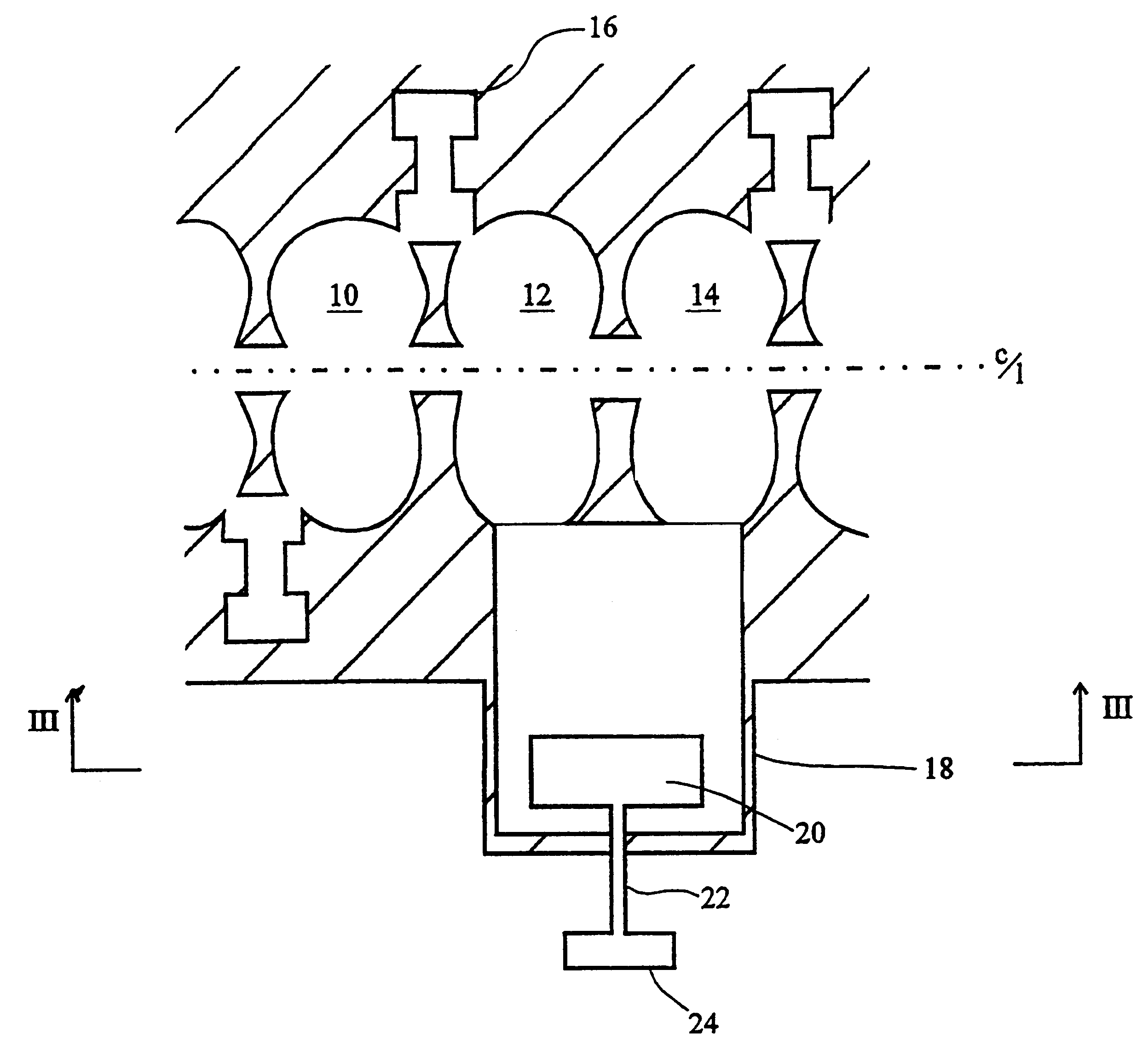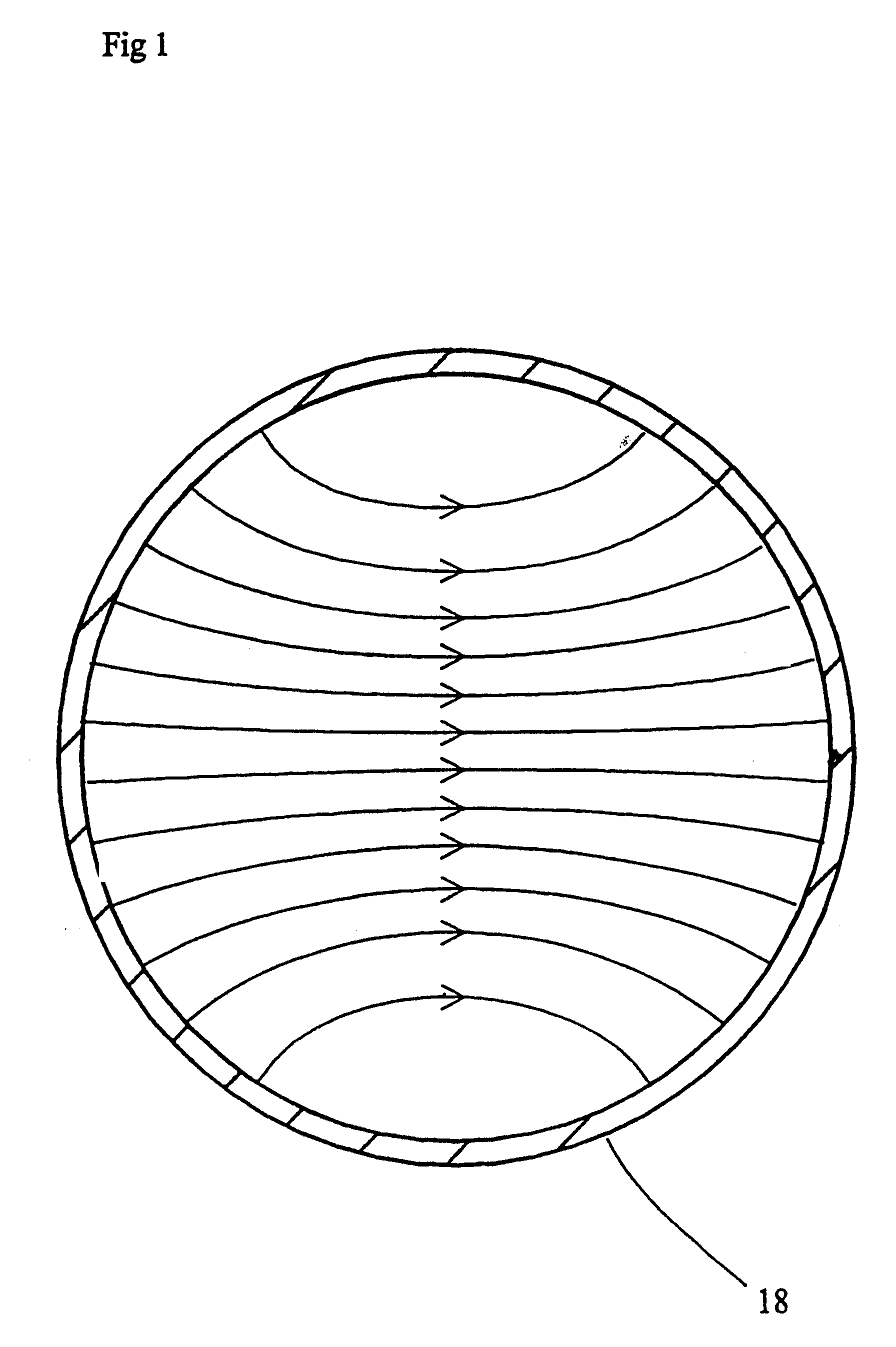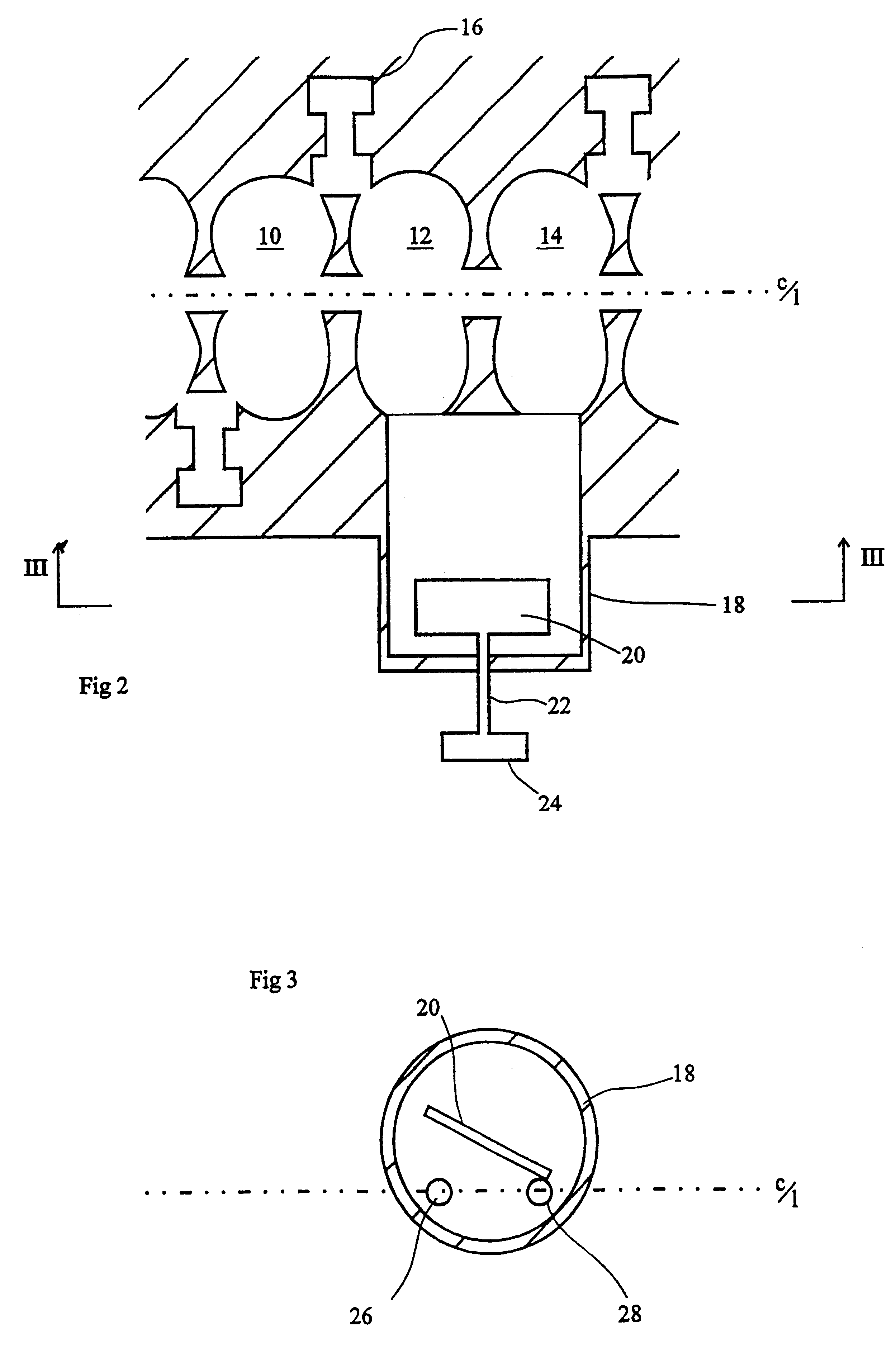Linear accelerator
a linear accelerator and accelerator technology, applied in the field of linear accelerators, can solve the problems of complex and high-precision positioning systems which are difficult to engineer in practice, devices that cannot continuously vary rf fields, and reduce the functionality of a simple switch
- Summary
- Abstract
- Description
- Claims
- Application Information
AI Technical Summary
Benefits of technology
Problems solved by technology
Method used
Image
Examples
first embodiment
In a standing wave accelerator the device could be implemented as shown in the first embodiment, FIGS. 2 and 3. These show three on-axis accelerating cells 10, 12, 14 as part of a longer chain of cavities. The first and second accelerating cavities 10, 12 are coupled together with a fixed geometry coupling cell 16, which is known art. Between the second and third on-axis cavities 12, 14, the fixed geometry cell is replaced by a cell 18 according to the present invention. This cell 18 is formed by the intersection of a cylinder with the tops of the arches that make up the accelerating cells thus forming two odd shaped coupling holes 26, 28. To function as intended, these holes should ideally be along a (non-diametrical) chord of the off-axis cylinder, which implies that the center line of the cylinder is offset from the center line of the accelerator, as shown in the FIG. 3. These coupling holes are in region of the cavity where magnetic field dominates, and so the coupling between c...
second embodiment
shown in FIGS. 4 and 5, the coupling cavity 30 is still transverse to the longitudinal axis of the accelerating cavities, but intersects with accelerating cavities 12, 14 along a cylindrical face thereof. Thus, the axes of the accelerator and of the coupling cavity do not intersect, but extend in directions which are mutually transverse. The paddle 20 etc. is unchanged. Otherwise, the operation of this embodiment is the same as the first.
third embodiment
FIGS. 6-10 illustrate the present invention. In the Figures, a short sub-element of a linear accelerator is illustrated, consisting of two accelerating cavities and the halves of two coupling cavities either side. In addition, the element includes a single coupling cavity embodying the present invention, joining the two accelerating cavities. A complete accelerator would be made up of several such sub-elements joined axially.
In FIG. 6, the axis 100 of the accelerating cavities passes into a small opening 102 into a first coupling cavity 104 (not visible in FIG. 6). A further accelerating cavity 108 communicates with the first accelerating cavity 104 via an aperture 106. The second cavity 108 then has a further aperture 110 on its opposing side to communicate with subsequent accelerating cavities formed when the sub-element of this embodiment is repeated along the axis 100. Thus, a beam being accelerated passes in order through apertures 102, 106, 110 etc.
A pair of coupling half-cavi...
PUM
 Login to View More
Login to View More Abstract
Description
Claims
Application Information
 Login to View More
Login to View More - R&D
- Intellectual Property
- Life Sciences
- Materials
- Tech Scout
- Unparalleled Data Quality
- Higher Quality Content
- 60% Fewer Hallucinations
Browse by: Latest US Patents, China's latest patents, Technical Efficacy Thesaurus, Application Domain, Technology Topic, Popular Technical Reports.
© 2025 PatSnap. All rights reserved.Legal|Privacy policy|Modern Slavery Act Transparency Statement|Sitemap|About US| Contact US: help@patsnap.com



